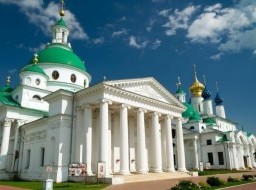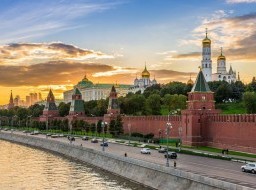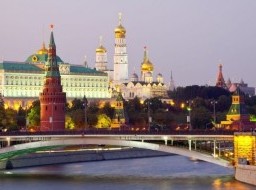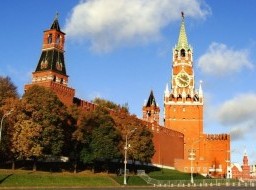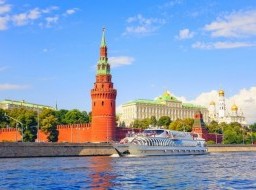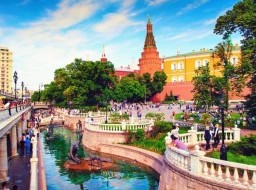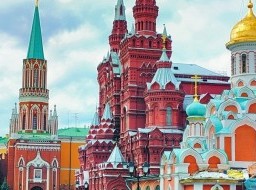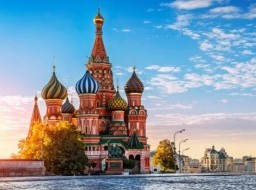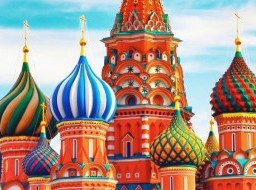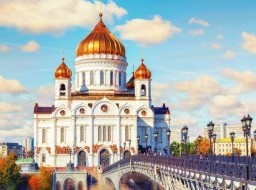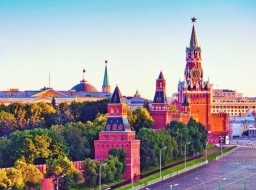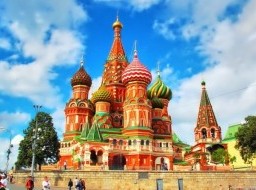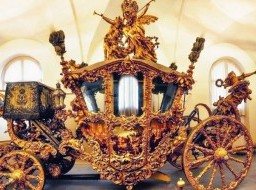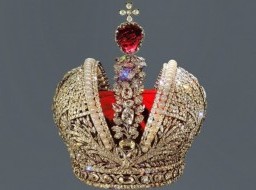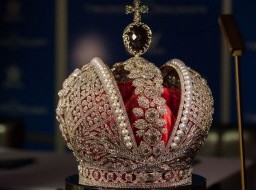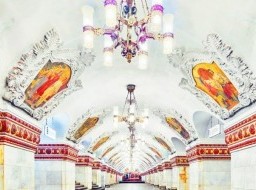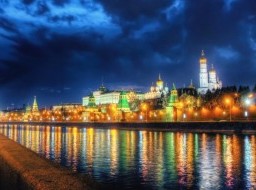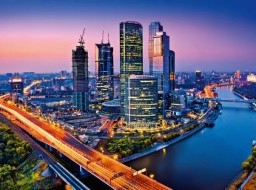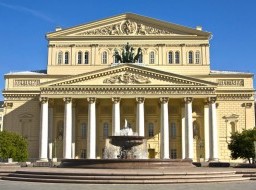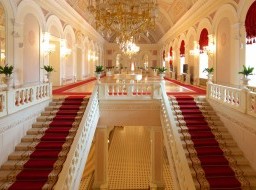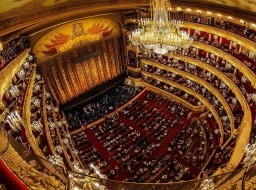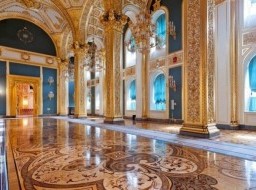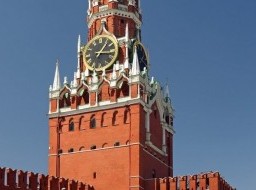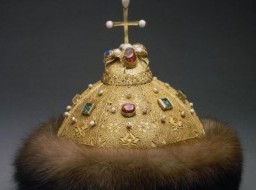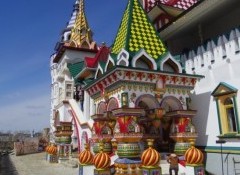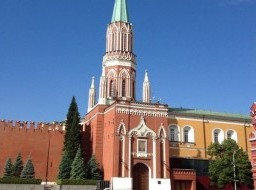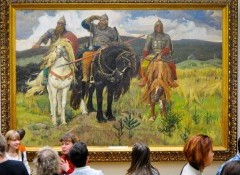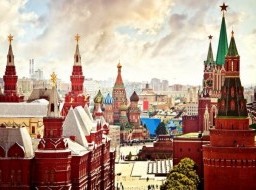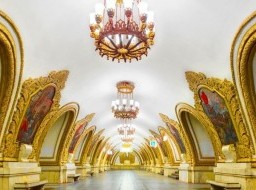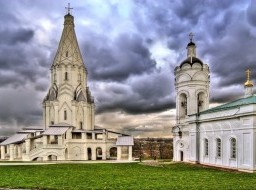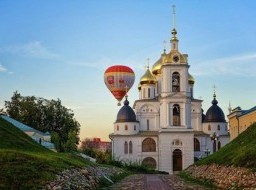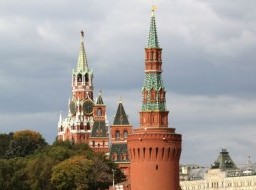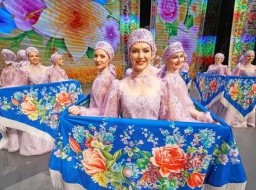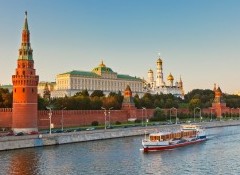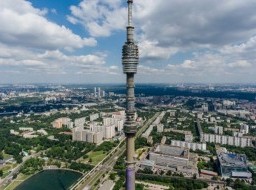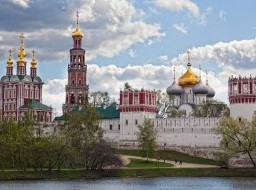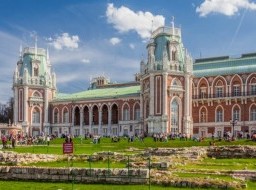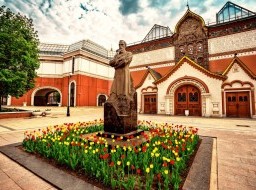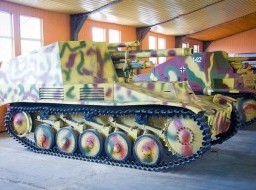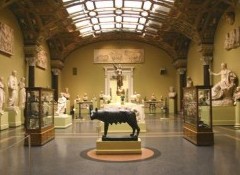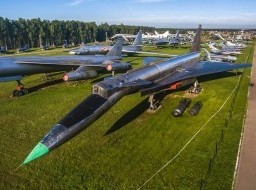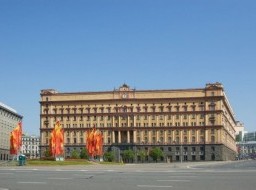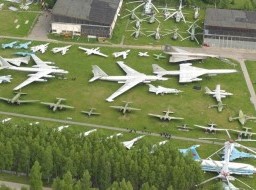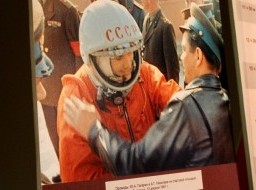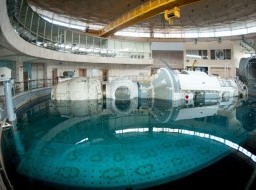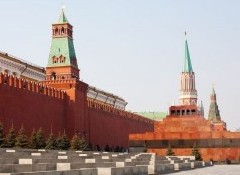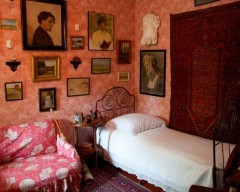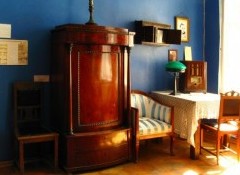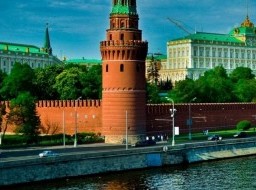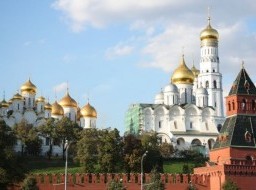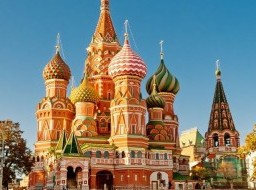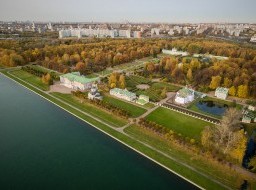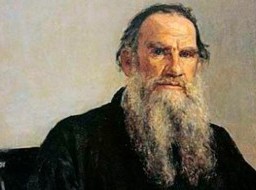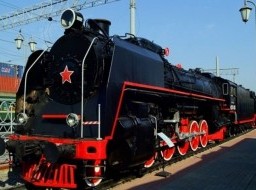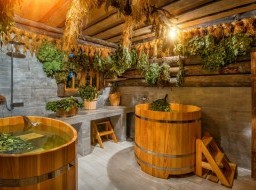Tsaritsyno
Tsaritsyno is a reserve in the southern part of Moscow, a unique historical, natural and architectural ensemble with a palace and park complex dating back to the second half of the 18th century. Presently, this major park within the boundaries of Moscow (with an area of almost 400 ha) is one of the most-loved attractions for tourists as well as Muscovites. Tsaritsyno Park is neighboured by Biryulevsky Arboretum, boasting some rare species of trees and bushes. The Tsaritsyno architectural monuments are ranked among the world’s major attractions, and large-scale expositions presented in the museum reserve will immerse you in the spirit of the 18th century. The palace and adjacent facilities are in a neo-gothic fantasy style, imitating the architecture of medieval catholic cathedrals of the 13th–15th centuries. THE HISTORY OF THE MANSION OF CATHERINE THE GREAT The palace and park ensemble was founded in 1776 by the order of Empress Catherine the Great to replace the old mansion of the 16th century. The mansion was owned by representatives of the most affluent and powerful aristocratic dynasties of Russia: the Godunovs, the Streshnevs, the Golitsyns, and the Cantemirs. Archaeological surveys show the land had been previously inhabited by Viatichi, an ancient Slavic tribe of the Moscow region (10th–12th cc.). The history of the palace is extraordinary. Catherine the Great didn’t like the (nearly completed) colossal complex designed by famous architect Vasily Bazhenov and ordered it to be torn down and rebuilt from scratch. Originally, Bazhenov’s ensemble consisted of 17 buildings including two symmetrical ones for the Empress and her son Pavel Petrovich, future Emperor Paul I. According to one version of the tale, the main reason for Catherine’s discontent was the architectural equivalence between the two buildings, as she had begun to disapprove of her royal heir by the end of construction. The Empress never lived in Tsaritsyno palace, and the construction was finished the year she died by another architect, Matvey Kazakov. From 1796, the palace had no interior finishing and was deteriorating. Tsaritsyno became a popular attraction in the 18th–19th centuries and walking through the majestic ruins was one of the favourite amusements of idle strollers. The reconstruction plans for Tsaritsyno were developed from the beginning of the 19th century, but they only began to take shape in 2007, when the fully renovated Grand Palace of Tsaritsyno was reopened. The reconstruction also embraced the park, the fountains, the alleys, the pavilions, and many other monuments. Today, it is not only an excellent historic palace and park complex but it also contains huge exhibition halls with the total area of 6,000 sq. m. THE ARCHITECTURE OF THE PALACE COMPLEX AND DESIGN OF THE PALACE COMPLEX The complex is designed in the style of fête galante. Each building is unique in its own way, altogether making a luxurious palace ensemble, worthy of being a residence of an 18th-century European monarch. The straight alley stretching from the central entrance turns into the majestic Figured Bridge (1776) connecting Tsaritsyno Upper and Middle ponds. From a distance, it resembles a fortress gate framed with robust towers on solid white stone abutments and with walls crowned by swallowtail teeth (just as on the Kremlin walls). The bridge will take you from the Great and the Small Palaces to the church and the greenhouses. As you go up the bridge, you will find yourself in a chiseled gallery, and the bridge towers will turn into semicircular alcoves. The central space in front of the palace opens to a beautiful panorama of the Tsaritsyno ensemble: the Grand Palace with the Bread House and the three Courtiers’ Quarters. The Grand Palace is a three-storey building, flanked by greenish-roofed towers. Just as almost any other Tsaritsyno building, this one combines red brick with white stone. The steeples on its towers, the lancet windows and arches can be seen from far away. The building consists of towered square side structures connected with galleries. The overall layout design resembles those of the palaces in Tsarskoye Selo and Peterhof. During the renovation works, the great Yekaterininsky and Tavrichesky Halls were also reconstructed. The wonderful gallery between the Grand Palace and the Bread House was constructed together with the latter in 1784–1785 to Bazhenov’s design and consists of two highly decorated walls. The Bread House is the conventional name coming from the loaf of bread and the saltcellar depicted on two facades of the building. This is one of the largest structures in the ensemble. Its giant gate was designed to let through trucks with fuel wood, food stuffs and kitchen utensils. The Imperial Palace housekeeping activities were humming in the kitchens and cellars of the Bread House, which represented around 40 vaults grouped in two parallel enfilades, specifically designed by Bazhenov. Nowadays, this cube-shaped building is topped with a glass dome, which hosts an atrium and a concert hall. Apart from the central ensemble, the Tsaritsyno Palace complex has a number of other amazing structures. The Figured (Grape) Gate (1777–1778) is one of the mansion’s landmarks. It is as if the whole spirit of Tsaritsyno is embodied in this structure. The gate is located at the end of the Birch Perspective, an alley leading to the palaces along the pond shore. The Grape Gate represents towers with lancet windows and arches, serving as a symbolic border between the palace and the park. There is a “bunch of grapes” carved in the middle lower part of the arch, which gave the gate its alternative name. In addition, the park part of Tsaritsyno features the Big Bridge over the Ravine, a massive structure above the ravine leading to the pond. Its heavy frames impresses the eye at a distance, with some of its elements evoking associations with catholic cathedrals. The facades are adorned with strange symbols which have not yet been deciphered. The winding paths lead to the so-called Temple of Ceres (Golden Sheaf Summerhouse) decorated with a statue of Ceres, ancient Roman goddess of fertility (1804, architect Ivan Yegotov). The southern island of Tsaritsyno Upper Pond is home to the Mermaid’s Gate, a ruined arch thought to be a symbol of ancient architecture. The high hill is topped with an odd structure designed by Yegotov to resemble a ruined Scottish tower, which is used as a lookout today. In addition, numerous small figured bridges and grottos are scattered around the park. The Tsaritsyno park ensemble also includes the Church of the Icon of the Mother of God of the Life-Giving Spring (18th century). It was founded in 1722 by prince Dimitrie Cantemir, Peter the Great’s companion. Like many other cathedrals, it was closed in 1932 and later brought to ruin. The church was restored and consecrated in the 1990s. THE MUSEUMS AND EXHIBITION HALLS OF TSARITSYNO You can take a walk around the park or visit its museum complex, which includes the interiors of the Grand Palace, an archaeological exhibition, historical and artistic expositions devoted to Catherine the Great’s era and the richest museum of applied and decorative arts. The latter holds a vast collection of oeuvres from around the former Soviet Union: glassware, pottery, decorative fabrics, chinaware, folk art products, etc. This museum opened in 1984, marking the beginning of the history of the modern Tsaritsyno Museum and Reserve. You can enter The Moscow Tsaritsyno Museum and Exhibition Complex through a special glass pavilion near the Grand Palace. The museum is connected with the Grand Palace and the Bread House by an underground tunnel and an atrium housing a cloakroom, ticket offices, a bookstore and bathroom facilities. After the reconstruction, the Grand Palace was equipped with lifts, so today it is accessible to all visitors. The Grand Palace currently offers some interesting themed exhibitions. One of them is Tsaritsyno Antiquities. Archaeology of Tsaritsyno. This is an exhibit of artifacts from different epochs discovered during reconstruction works and excavations; there is also a model of the ruined Tsaritsyno Palace. Another is called Memories of the Great Ruin, which showcases the history of both the Grand Palace’s demolition and reconstruction. Silver Storeroom contains items made of precious metals held by the museum, which include works by the houses of Sazikov, Ovchinnikov, Fabergé, Khlebnikov, etc. The Old and the New Tsaritsyno, a local history exhibition, presents the history of Chernaya Gryaz village from 1775, when it was bought by Catherine the Great, up to the early 20th century. The first floor of the Grand Palace hosts a permanent exposition called Catherine the Great: The Golden Age of the Russian Empire devoted to the Empress, her life, her fortune and her fate. You will also see authentic portraits, furniture, chinaware, weapons and everyday objects of the era here. The permanent exhibition Tapestry for the Palace will also draw your eye, presenting masterpieces of West-European weaving art of the late 17th and 18th centuries. Paintings and furniture contribute to the spirit of the Golden Age palace interiors. A 900 sq. m area is occupied by the permanent exhibition The Art of Grand Style which describes both applied and decorative arts and their history during the era of the Soviet Union spanning from 1961–1991 (sections: On Guard for the Motherland, Holidays and Weekdays, Our Great Motherland, Youth and Sports, Art to the People, Earth and Space). From the Grand Palace, you can use the underground tunnel to reach the Bread House. The spacious rooms of the Bread House also host permanent and temporary exhibitions. In particular, Art within the Soviet Union presents the best part of the collection owned by the Museum of Applied and Decorative Arts: clay toys, metal and wooden handicrafts, national costumes, woven fabrics, embroidery, and objects of applied and decorative arts of the 20th century. THE LANDSCAPE PARK Tsaritsyno is not only a monument of architecture but also a gorgeous landscape park. It reflectsthe personal tastes of the Empress and the charm of the 18th century with its passion for illusions and interplay of architectural forms. The park looks very romantic and sometimes even mysterious, having preserved its natural topography and flora, which features some rare native species. There are also renovated structures and pavilions, restored and purified ponds, waterfronts, berths and dams. As you walk around the park, you will see a lot of sculptures. Tsaritsyno Middle Pond has an animated fountain, the largest in Moscow, which operates in summertime. The park houses annual flower festivals, a stable yard and a boathouse, electric car tours and historical costume photo shoots. The greenhouses are home to tropical plants, fruit trees and herbs. All exhibits have been selected to match the assortment of Tsaritsyno greenhouses of the 17th century. The surface area of the greenhouse complex is over 2,700 sq. m. Tsaritsyno is outstandingly picturesque. Its beauty and mysterious history won’t leave you indifferent, and you will definitely want to come back here again!! |

